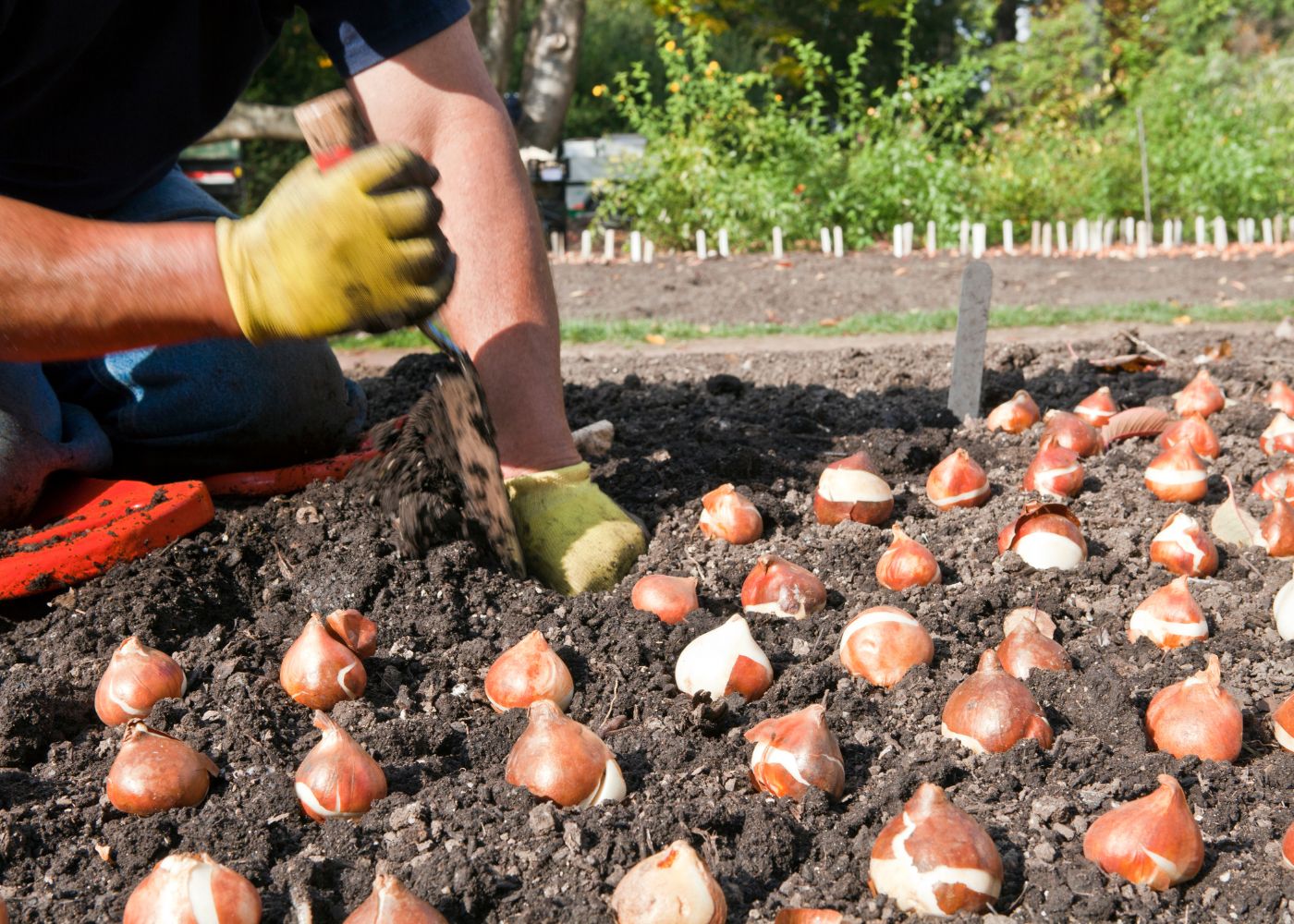
When to plant tulip bulbs for a colorful spring
When to plant tulip bulbs? That's a question many gardeners ask as soon as summer is over. Tulips are one of the most popular spring flowers, bringing color, cheerfulness, and variety to any garden. With the right timing and care, you can enjoy a beautiful field of flowers in spring, whether planted in the ground or in pots on the patio.
The best time to plant tulip bulbs
The best time to plant tulips is between September and December, before the first frost. During this period, the bulbs have plenty of time to establish roots and prepare for spring.
Are you late? No problem. You can still plant them in January or February, as long as the ground isn't frozen. Tulip bulbs are winter-hardy, meaning they can tolerate low temperatures well. Just keep in mind that flowering will start a little later in that case.
Location and soil type for healthy tulips
A sunny spot is ideal for planting tulip bulbs. The more sun the flowers receive, the better they will grow and bloom. Always ensure the soil drains well to prevent bulb rot.
If you have heavy clay soil, mix it with sand and compost to improve its structure. For light, sandy soil, adding compost will help retain moisture better and increase its nutrient content.
Explanation of planting tulip bulbs
Planting tulip bulbs is simple, but requires some attention to detail. Below, we'll explain it step by step:
- Choose a sunny spot with well-drained soil.
- Improve the soil if necessary with compost and possibly some sand.
- Dig a planting hole about 20 centimeters deep.
- Place the ball with the point facing up.
- Leave about 5 centimetres of space between the bulbs.
- Cover with soil and press lightly.
- Water the bulbs
Types of tulips and flowering time
There are over 3,000 registered tulip varieties, classified as early, mid-early, and late bloomers. By combining different varieties, you can extend the flowering period in your garden from March to May. Early tulips provide color as early as March, while late varieties don't bloom until May.
Besides the blooming period, there's also a huge variety of shapes and styles. The single tulip is classic and timeless, while the double tulip produces a full, lush bloom. Parrot tulips command attention with their strikingly serrated and colorful petals. French tulips are known for their extra-long stems and elegant appearance. By cleverly combining them, you can create a garden that not only blooms for a long time but also offers a variety of colors and shapes.
Tulips as mood setters in any type of garden
Tulips are more versatile than many people think and fit into almost any garden style. In a modern garden, neat rows of red or white tulips create a stylish and minimalist effect. If you have a more rustic garden, a vibrant mix of colors and varieties will be much more effective. Tulips blend effortlessly into the ambiance of their surroundings and always bring a cheerful touch.
Even small gardens or even balconies benefit from tulips. In pots and containers, you can easily combine different colors or choose a single, striking shade. By cleverly playing with heights and flowering periods, you can create a vibrant ensemble. Tulips are not only spring classics but also true mood-makers that make any outdoor space special.
Combine tulips with other spring bulbs
Tulips look beautiful on their own, but they look even better when combined with other spring bulbs, such as daffodils , hyacinths, and alliums . These plants have similar planting times and often bloom slightly earlier or later than tulips, giving you more color in your garden.
A popular technique is "layered planting" (also called lasagna planting). This involves planting bulbs in layers on top of each other, so that new flowers continually emerge.
Planting tulip bulbs in pots
Don't have a large garden? Tulips also grow well in pots and containers. Always use pots with a drainage hole and place a layer of gravel or pot shards at the bottom for good drainage.
Plant the bulbs at the same depth as you would in the ground, and preferably place the pots in a sheltered spot. In severe frost, you can bring them indoors temporarily or cover them with bubble wrap.
Planting tulip bulbs with children: an educational activity
Planting tulip bulbs is a surprisingly fun activity to do with children. The digging, holding the bulbs, and covering them with soil makes it tactile and playful. Children also learn something about nature and the seasons. The prospect of colorful flowers appearing in the spring where they helped makes it even more special.
You can even make it a small project. Give each child their own patch of ground or pot, so they feel responsible for their own flowers. It's a simple way to bring children closer to nature and encourage their patience and care. And when the first tulips appear, the pride in their work is often priceless.
Post-flowering maintenance
After flowering, it's important to leave the tulip foliage until it has completely withered. This allows the bulb to store nutrients for the following year. Only cut off the spent flowers to prevent seed formation.
If you want to dig up the bulbs, do so as soon as the foliage has died back. Store them in a cool, dry place until the next planting season.
Famous tulip fields in the Netherlands
The Netherlands is world-renowned for its tulips. Places like Keukenhof, the Bollenstreek, and the Noordoostpolder attract thousands of visitors every year. Here you can find inspiration for color combinations and planting plans for your own garden.
Enjoy your colorful spring garden
With the right preparation and the right planting time, planting tulip bulbs is an investment in months of gardening pleasure. Whether you choose a single variety in a neat border or a colorful mixture scattered throughout the garden, tulips will always bring a smile to your face.
When to plant tulip bulbs? The perfect time starts now.
Whether you're a novice gardener or have been working with flowers for years, choosing the right time is the key to success. Planting tulip bulbs not only determines how beautifully they bloom, but also how long you can enjoy them. So don't wait until the last minute. Choose a beautiful autumn day, put on your gloves, and fill your garden with these colorful spring classics.
At Bulbs4you , you'll find a wide selection of top-quality tulip bulbs in all colors and varieties. Order now to ensure you can plant on time and be rewarded in spring with a garden full of color, energy, and joy. Your perfect spring starts today.
Frequently asked questions about planting tulip bulbs
1. Can you plant tulip bulbs in summer?
No, the bulbs need a cold period to bloom well.
2. Do animals like mice eat my bulbs?
Yes, that can happen. If necessary, plant the bulbs in special bulb baskets.
- Can I leave tulips there year after year?
Yes, but after a few years, flowering may diminish. Therefore, replace some of the bulbs occasionally.
4. Can I plant tulip bulbs in the shade?
Yes, but flowering may be less abundant. Ideally, choose a spot where the bulbs get at least half a day of sun.
5. Should I fertilize tulip bulbs when planting them?
This isn't mandatory, but it can contribute to stronger and longer stems. It's best to use an organic bulb fertilizer.
6. How do I prevent tulip bulbs from rotting in wet winters?
Always ensure well-draining soil. In pots, a layer of gravel or pot shards at the bottom helps to drain excess water.
Share
